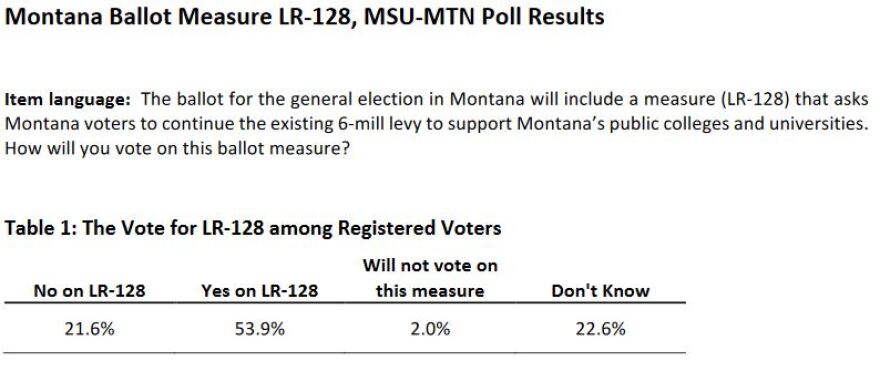A political analyst found there’s a high level of uncertainty about 3 of the measures on the November 6th ballot. David Parker said that doesn’t bode well for 2 of them.
“Don’t know often means we’ll go for the status quo,” said Parker, MTN’s chief political analyst and a MSU political scientist. “The status quo on initiatives is that you’re going to say, ‘I don’t want to change the law I’m going to vote no.’”
In the MSU-MTN Poll, respondents were asked about 3 ballot measures: I-185, I-186 and Legislative Referendum 128. The poll found collectively that between 18-to-22% of respondents said they didn’t know how they would vote.
I-185 seeks to increase the tobacco tax. The revenue raised would be used to pay for Medicaid Expansion and it would make that health coverage for the working poor permanent.

Parker said the high level of voter high uncertainty could mean I-185 is headed for defeat.
“Here’s why I think it’s going to lose: remember what I said, ‘don’t know’ basically means ‘no,’” he said.
Parker also pointed out the overwhelming amount of money opponents, primarily tobacco companies are spending. So far, spending has eclipsed $25 million with opponents greatly outspending proponents.
“So when you think about the information environment that’s so skewed in one direction that tells me that I think this is going to lose,” said Parker. “This is going to cause some serious problems - I think - for the governor in the next legislative session.”
That’s because Montana’s current Medicaid Expansion law is set to sunset next year unless lawmakers reauthorize the program.

The other ballot measure that may also be headed for defeat is I-186 aimed at hard-rock mining. Again, Parker points to the high number of undecided voters.
“So in this case, I think a lot of those don’t knows - maybe upwards of 90% of them - are actually no’s,” he said. “Which means if you take that into consideration this is neck-and-neck at the end of the day. So this is one I’m going to say is too close to call despite we have this 50.6 to 28.6 margin.”

As for the third ballot measure in the poll, Parker said it’s a bit awkward that MSU, one of the poll sponsors, is asking registered voters for their opinion on whether to continue the 6 mill levy that helps fund the Montana University system. He said that’s one possible reason for the high number of “don’t know” responses.
Still he pointed out if uncertainty means voters will stick with the status quo - and that is exactly what voters are being asked to do – he anticipates this measure will pass.
“The status quo is the mill levy. It exists and has been supported. So some of those ‘Don’t Know” at the end of the day are probably going to be ‘yeses,’” he said.
The poll was conducted at the end of September through early October. Some 10,400 questionnaires were mailed to registered Montana voters across the state. About 20% were returned. That’s a margin historically better than those conducted by telephone. The margin of error is plus-or-minus 2%.




